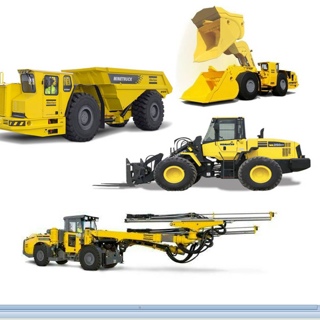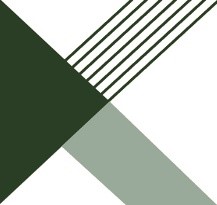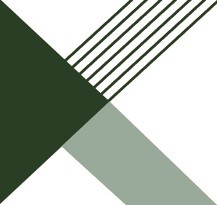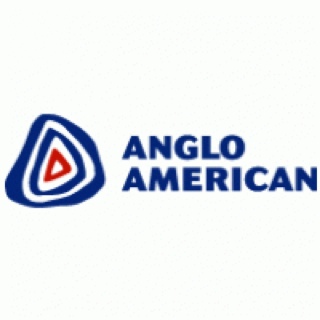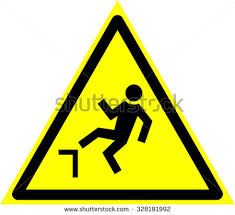Information
-
Document No. RHMI-019-0610 R1
-
Audit Title
-
Equipment Supplier
-
Conducted on
-
Prepared by (Audit Team Leader)
-
Signature of Audit Team Leader
-
Location
-
Audit team
-
Equipment Type
-
Gross Vehicle Mass
-
Primary Task
-
Secondary Task
Section A - Operator Access
-
A1 - Appropriate access to cabin fitted with steps or stairs, with the bottom step no more than 400mm from the ground level.
-
Rather than ladders, steps or stairs should be fitted where possible. Many injuries have occurred from large steps onto uneven ground.
-
A2 - Steps, rungs and hand holds highly visible and allow 3 points of contact at all times
-
RTSS C4 - Working at height
-
A3 - If bottom step/rung below lowest extremity of the machine, step flexibly mounted
-
Minimise damage
-
A4 - Steps, rungs, ladders and platforms provide with non-slip surface and minimise rock and soil retention
-
A5 - If powered extension steps or ladders fitted is there a lock out provided
-
Prevent steps or ladders moving or operating while extended
-
A6 - Adequate provision made for operator regular access (pre-start inspection and general operation) and maintenance regular access (greasing, servicing). Review;
-
Ergonomic, design regular access points at ground level. Need to ensure every day tasks are easy to undertake.
-
Engine oil level check and refill points
-
Hydraulic oil level check and refill points
-
Transmission oil level check and refill points
-
Radiator fluid level check and refill points
-
Fuel refill points
-
Grease point access
-
Access to cleaning windows
-
A7 - Areas above 1.8m from ground level to have Fall Prevention AND / OR Fall Protection systems in place (depending on application)
-
RTSS C4 – Working at heights
-
Fall Prevention (to stop a person falling) – For hand railing, require level floor, top rail (between 910mm and 1070mm from floor), mid rail and toe boards (min 100mm high) and safe access and egress. Hand railing to take force of 0.9kN in any direction.
-
Fall Protection (to protect a person if they do fall) – engineered anchor point(s) (to withstand 5000lbs (2300kg) of load) for connecting personnel safety harness and lanyard.
-
A8 - Areas between 1.5m and 1.8m from ground level (where people need to access) needs to be examined as to the risk of falling, consider hand railing in these areas
-
Look at frequency of access, how stable is footing or platform, hand holds, and so on)
-
A9 - Pinch points exposing personnel to risk of injury are to be identified and controlled.
-
Look at access to machine, as well as any booms, articulation, scissor lift action, hydraulic cylinders
Section B - Operators Cabin
-
B1 - Roll Over Protection System (ROPS) to be fitted to underground mobile equipment
-
NWT Regs 10.43
-
CSA B352-M 1980, Rollover Protective Structures for Agricultural, Construction, Earthmoving, Forestry, Industrial and Mining Machines; or
-
SAE J-1040, Surface Vehicle Standard Performance Criteria for Rollover Protective Structures (ROPS)
-
B2 - Falling Object Protective Structures to be provided with underground mobile equipment.
-
SAE J-231, Minimum Performance Criteria for Falling Object Protective Structures (FOPS)
-
B3 - No damage, addition, modification, welding or cutting of a ROPS or FOPS without engineer approval.
-
NWT Regs 10.43
-
B4 - Each ROPS or FOPS requires permanent stamping of the name of the manufacturer or certifying engineer, model and serial number, and machine type it is built for.
-
NWT Regs 10.43
-
B5 - Two means of exit should be provided from operator’s cabs. This may be achieved by a second door or a push out window or panel. Any push out window or panel should be suitably marked.
-
B6 - At least one exit should be useable in the event of a roll-over.
-
B7 - Cabins should seal from dust and noise; the maximum equivalent noise level of the running machine (With the doors and windows closed and the air conditioning system operating at maximum speed) should not exceed 83dB(A) for 12 hour shift.
-
The equipment supplier should provide a written record of all information related to tests on the completion of commissioning procedures
-
B8 - The location of cabs and the fitting of windows should provide the operator with maximum visibility.
-
B9 - All windows should be fitted with laminated safety glass or other shatterproof material.
-
Mine Reg 10.29
-
ANSI Z26.1-1977 Safety Code for Safety Glazing Materials for Glazing Motor Vehicles Operating on Land Highways.
-
B10 - Forward and rear windscreen washing and wiping facilities should be provided, along with demisting provision.
-
NWT Regs 10.29
-
B11 - The operator’s seat should be well maintained and shock absorbing (adjustable for operator weight). The seat should be made to allow the operator to comfortably wear the required cap lamp battery and self-rescuer.
-
NWT Regs 10.29
-
B12 - The operator’s seat belt and seat belt anchorages are to be robust and conform to regulations.
-
NWT Regs 10.48
-
SAE J386 Operator Restraint Systems for Off Road Work Machines.
-
B13 - Air conditioning / heating should be provided to control the cabin air. The mounting of the air conditioner or the accessories should not interfere with driver visibility.
-
ANSI Z21.40.2-19996 (ROZ) CGA 2.92-M96
-
B14 - The air conditioner air intake should be located to avoid engine exhaust emissions, any fuel or heat source, and fumes that could be expected from any fire.
-
B15 - The cab interior, upholstery and insulation should be made of fire resistant material.
-
B16 - All cabin wiring systems are low voltage (less than 32 volt AC)
Section C - Cabin Controls and Functions
-
C1 - Operator controls located within zone of comfort and reach
-
NIOSH Control Design
-
C2 - Operating controls clearly marked to show function and mode of operation
-
NIOSH Control Design
-
C3 - If equipment can exceed 30 km/h a speed indicating meter to be attached
-
C4 - A horn or similar device provided for use as a manually initiated audible warning device. If horn is air operated, an alternative warning device is required
-
In case of failure in air delivery system
-
C5 - Unless machine designed for bi-directional use, audible backup alarm to be fitted, which is automatically activated when reverse selected
-
NWT regs 10.27
-
C6 - Emergency Stop/shutdown provide in control cabin, clearly marked and identified
-
C7 - Emergency Stop/Shutdown electrical circuit independent of machine power supply
-
Intention for emergency stop circuit to connect directly to source of fuel, eg fuel pump solenoid
-
C8 - Emergency Stop/Shutdown when operated latches either electrically or mechanically
-
Such that the actuation can only be reversed by a deliberate action and the equipment does not restart automatically
-
C9 - Transmission interlock to be fitted, so that the vehicle cannot be started in gear
-
NWT regs 10.28
-
C10 - A service hour meter is fitted
Section D - Engine Compartment, Cooling and Fuel Systems
-
D1 - The location of services including fuel, hydraulic oil, lubrication oil and electric power within the engine compartment should be avoided where possible
-
D2 - All hydraulic oil, lubricating oil, and other oil circuit pipes and hoses within the engine compartment should:
-
CSAM 421-00 Use of Electricity in Mines with CSAC 22.1 Canadian Electrical Code, Mine Act & Regulations part 13
-
Be constructed to OEM specification
-
Be routed away from hot engine surfaces
-
Be routed away from moving parts, supported and sleeved to give maximum mechanical protection
-
Be covered so oil from any leak can’t contact any exposed metal surface where temp exceeds 200°C under any condition of use
-
Be covered so that fuel from any leaks can’t contact any exposed metal surface that exceeds 80°C under any condition of use
-
D3 - All electrical wiring system are to regulation and are protected / shielded from heat and damage
-
D4 - All engine exhaust systems installed so that no flames or glowing particles can be emitted within the engine compartment under any condition of use
-
D5 - Fire wall or barrier is installed to separate the engine compartment from hydraulics components and maintains engine ventilation and cooling effect
-
D6 - All engine covers (bonnet) made from non-flammable material
-
D7 - Radiator caps for cooling systems are fitted with a means of safely relieving pressure to prevent scalding personnel
-
D8 - Radiator caps are guarded against damage from foreign objects
-
D9 - Unit fitted with fuel devices requiring power to operate
-
So that isolation of power will isolate engine
-
D10 - All fuel lines double braid, heat resistant, corrosion resistant metal braided or metal
-
D11 - Fuel filter elements enclosed within metal containers
-
D12 - All fuel lines clamped with approved clamps
-
D13 - All fuel tanks substantially constructed and protected against damage by collision
-
D14 - All fuel tanks fitted with non-leaking caps which are effective irrespective of the attitude of the equipment
-
D15 - All fuel caps are secured to the tank
-
To stop chance of lost fuel caps and contaminated fuel / fire hazard
-
D16 - Where fuel overflow hoses are fitted the hose extends so its lower than all engine components
-
Minimise chance of fire
-
D17 - If no automatic fast-fill filling system fitted, filler and vent must be located so that leaks or spillage during refuelling will not contact hot surface
-
D18 - Engine must run on low sulphur fuel (sulphur content less than 0.25% by weight)
-
NWT Regs 10.61
-
D19 - Undiluted and unscrubbed exhaust gases from diesel engine is less that 1500ppm by volume of carbon monoxide
-
NWT Regs 10.61
Section E - Fluid Power Systems and Pneumatic Systems
-
E1 - Flexible hoses must be compatible with the hydraulic fluid used and maximum system pressure and temperature
-
OEM & CSA M423-M87 (R2000) Fire Resistant Hydraulic Fluids.
-
E2 - Where a hydraulic system incorporates an accumulator, the accumulator should be connected to the system using components of minimal length and adequate rating. Fittings should be located or otherwise guarded to provide mechanical protection.
-
E3 - A manual bleed valve should be fitted to allow pressure relief for maintenance. Fluid should return to tank. Self draining accumulators are preferable. OEM requirements for bleed down of accumulators is required in maintenance manuals
-
Isolation / dissipation of stored energy
-
E4 - Nylon or PVC piping for pneumatic control systems of safety related items should be used only in cases where loss of pressure within these systems cause the system to fail to safety. All such piping should be adequately protected from physical damage and shielded from contact with hot and or sharp surfaces.
-
E5 - Only properly specified hoses should be used between an air compressor and an air receiver. Care should be taken to ensure the clamps used are suitable for the job and have the pressure rating stamped on them.
-
E7 - Air compressors and pressure vessels should comply with the requirements of the Mines Inspection Act
-
NWT Regs 10.98
-
B51-03 Boiler, Pressure Vessel and Pressure Piping code
Section F - Brakes and Steering
-
F1 - Equipment to contain;
-
NWT Regs 10.30
-
Service Brake
-
Park brake (mechanically activated holding power)
-
Secondary or emergency brake (which can use the service break or park brake system)
-
A failure in one system not to affect the ability of one of the systems to stop the equipment safely
-
F2 - All braking systems able to be tested from operator’s seat.
-
NWT Regs 10.30
-
F3 - Service braking systems to be dual circuit systems, each capable of stopping and holding equipment.
-
A separate circuit for front wheels and a separate circuit for rear wheels. Both circuits should be operated by the same brake pedal.
-
Mine Reg 10.30
-
F4 - For fluid braking circuits, an alarm device and indicator lights should be provided on the control panel of equipment to warn of failure in fluid circuit or dangerous drop in brake pressure
-
NWT Regs 10.30
-
F5 - Either brake system pressure gauges should be provided, or points for measuring brake system pressure to be provided.
-
F6 - Pneumatic or hydraulic energy storage systems, if required for brake systems, must be provided solely for brake applications (eg not steering).
-
F7 - For power assisted brakes, an emergency energy source capable of applying the braking system must be provided
-
NWT Regs 10.30
-
F8 - Manufacturer recommendation required on testing of each braking system. An external method to monitor brake wear and brake reservoir fluid levels to be provided.
-
NWT Regs 10.31
-
F9 - Brake linings or pads not contain asbestos.
-
F10 - The original equipment manufacturer of the equipment to which the rims and wheels are fitted should recommend and advise:
-
The maximum wheel loads, speeds and operating temperature etc.
-
Procedures for servicing wheel rims, including in particular, multi-piece wheel rims.
-
Clear limits of tolerances, permissible wear and other permissible defects of wheel and rim components.
-
Recommended tire pressures and tire wear.
-
F11 - Where equipment depends on power to steer (and loss of power would result in loss of steering) and has a maximum speed greater than 20km/h, an auxiliary steering device is to be fitted to allow enough time to steer the vehicle to a stop
-
NWT Regs 10.38
-
SAE J1511/ISO 5051, Steering for Off Road Rubber Tired Machines
-
F12 - Hydraulic pump used for auxiliary steering to use a separate fluid reservoir from main reservoir.
-
NWT Regs 10.38
-
F13 - For equipment exceeding 45,000Kg with maximum speed greater than 20Km/h, non destructive testing required on front wheel spindles, in accordance with manufacturer.
-
NWT Regs 10.39
-
F14 - Equipment with automatic engine shutdown devices must have audible and visual alarms warning operator of imminent shutdown.
-
NWT Regs 10.41
-
F15 - Auxiliary steering must automatically be activated on such an engine shutdown.
-
NWT Regs 10.41
-
F16 - An override system shall be fitted so that the operator can temporarily suspend automatic engine shutdown (to bring equipment to a safe stop)
-
NWT Regs 10.41
Section G - Electrical
-
G1 - A single electrical isolation lockout point to be provided, which when activated disables all electrical power supply to the vehicle.
-
NWT Regs 10.21
-
G2 - Isolation of energy sources other than electricity (eg air, water, fluid under pressure, steam) to be identified in operating manuals, and be able to be locked out and isolated
-
NWT Regs 10.21
-
G3 - All electrical wiring is to be protected from personnel contact. Electrical distribution boxes are to be lockable to restrict unauthorised entry.
-
RTSS C2 Electrical safety
-
G4 - Electrical safety devices such as earth leakage and overload protection should be installed on equipment
-
RTSS C2 Electrical safety
-
G5 - Any remote controlled equipment, or any remote starting parts on equipment, must be reviewed against the details within the regulations
-
NWT Regs 10.64 to 10.71,
-
G6 - All conveyors require a pull cord to stop conveyor in an emergency, with a manual reset before restarting
-
NWT Regs 10.118
-
G7 - All remote starting conveyors require audible start up warning device for 10 seconds before motion
-
NWT Regs 10.118
-
G8 - Underground conveyor belting to meet fire requirements
-
CAN/CSA – M422 – M87, Fire Performance and Antistatic Requirements for Conveyor Belting.
-
G9 - Automatic fire suppression system at the drive pulley
-
NWT Regs 10.118
Section H - Guarding and Shielding
-
H1 - Suitable devices must be available to support and block equipment components in a raised position for operation or maintenance (eg truck tray, loader arm), which should be attached to the vehicle
-
NWT Regs 10.55
-
H2 - Articulated vehicles should be fitted with a steering frame lock attached to the vehicle.
-
H3 - Guards required on moving components which personnel can contact (drive belts, pulleys, sprockets, flywheels, pistons, tail shafts, conveyor belting). Guards must be sufficient to minimize chance of personnel contact.
-
NWT Regs 10.16
-
H4 - Guard or shields fitted in the vicinity of the exhaust, turbocharger and other hot surfaces to prevent both personnel contact, and fuel or oil spraying on hot surfaces (provided they don't trap fuel or oil around the exhaust or turbocharger).
-
NWT Regs 10.16
-
H5 - Guards required around every tail shaft to prevent a damaged or broken shaft from whipping around in a compartment or digging into the ground.
-
H6 - Guards should be designed so that operation and servicing can occur with the guards in place. Guards which need to be removed should be hinged to the machine. Guards should be easy to lift and hold without risk of finger injury
-
H7 - Any covers, shields or guards, if not constructed from steel, shall be constructed from fire resistant material if the failure of the material may place an operator at risk.
-
H8 - No modification has occurred to guards or shielding
Section I - Lights
-
I1 - All lights should be easily cleanable from ground level.
-
If not approved method of cleaning must be in place
-
I2 - All mobile equipment to be provided with the following:
-
NWT regs 9.49
-
CSA-M424.2-M90
-
Dual indication lights readily visible from the rear of the equipment to show service brake operation.
-
Where retard braking is provided by other than service brakes, dual indication lights visible from the rear of the equipment.
-
Minimum 2 headlights to illuminate roadway
-
I3 - Reversing lights should be provided on all equipment. The lights should be initiated automatically when reverse is selected, except for bi-directional vehicles which should be equipped with headlights for both directions.
-
I4 - Adequate reflectors and / or reflective tape should be provided on equipment to make it readily visible from any direction. Eg on the front head board or highest extremity of mobile equipment to provide visibility in undulating terrain, and the sides of all equipment to assist in identifying the length of the equipment.
-
I5 - A flashing light required to be mounted above the cab or clearly visible in all directions (Orange = light vehicle or service vehicle; Blue = heavy vehicle; Red = explosive or emergency vehicle)
-
NWT Regs 10.51
-
I6 - Indicator lights should be fitted front and rear to trucks, service vehicles and light vehicles only to warn other traffic of an intention to turn.
Section J - Maintenance
-
J1 - Shift safety and maintenance checklist to be provided (from manufacturer or supplier), for use as prestart inspection
-
NWT Regs 10.04
-
J2 - Manufacturer / supplier recommended ongoing inspection and maintenance program to be provided.
-
NWT Regs 10.04
-
J3 - For previously used equipment, a written record of past tests, inspections and maintenance work carried out.
-
NWT Regs 10.04
-
J4 - Are there confined spaces which could be minimized or eliminated by design?
-
RTSS C5 – Confined spaces
Section K - Labelling and Instruction
-
K1 - Compliance plate, displayed in a prominent position, should show:
-
The serial number.
-
The tare and gross weight of the equipment.
-
The axle loads.
-
The maximum number of personnel for whom seating is provided.
-
Maximum operating grade and load limit for that grade
-
K2 - A list of all limits of equipment operation applying to the equipment should be submitted. Such limits should be in accord with relevant standards and should include, but not necessarily be limited to:
-
Maximum grade (%) - Loaded and Unloaded
-
Maximum cross grade (%) - Loaded and Unloaded
-
Maximum load (tonnes) - Level conditions and with a range of grades
-
Maximum speed (km/hr) - Under all above conditions
-
K3 - Labels displaying warning at all accumulators that pressure must be safely released before work commences.
-
K4 - Labels displaying warning on any spring applied brake chamber that it contains a spring under compression.
-
K5 - Labels displaying warning on all suspension cylinders, which are under constant pressure.
-
K6 - Labels displaying warning that "hearing protection must be worn" if noise level exceeds 83dB(A) at any location on the equipment.
-
For 12 hr operation
-
K7 - Labels identify all pinch points and coloured red or identified by warning labels
-
K8 - Labels identifying unauthorized access in areas above 110v DC or 32v AC
-
RTSS C2 Electrical safety
-
K9 - Towing instructions to be provided by the manufacturer, with towing points clearly identified.
-
K10 - Equipment constructed in separate sub-assemblies for transport should have;
-
The weight of the sub assembly and the attachment points for lifting permanently marked on it.
-
The lifting attachment points should have a minimum safety factor of 4 on the ultimate breaking load in relation to the weight of the sub-assembly.
-
K11 - Labels displaying the required driver action in event of a fire occurring,
-
K12 - Labeling of all controls including direction of movement where applicable
-
K13 - Labels should be made of non-corroding material and be attached with non-corroding screws, rivets, etc.
Section L - Fire Control
-
L1 - All units of diesel engine mining equipment carrying more than 100 litres of flammable hydraulic fluid must be fitted with an AFFF or equivalently effective multi nozzle fire suppression system in the engine compartment and in other likely combustion compartments.
-
Mine Reg 10.42
-
RTSS D1.3 Fire precautions
-
L2 - The system should not allow the engine to start, or to keep running, if system pressure falls below the manufacturers recommended minimum pressure (ie discharged, faulty or disconnected).
-
The interlock may be able to be over-ridden by an over-ride switch that requires constant hand operation. This applies to allow the plant to be moved to a safer location.
-
L3 - When any in-built fire suppression system is actuated by any means, the engine should automatically shut down. A delay of about 6 seconds could be installed.
-
L4 - All units should be fitted with at least two manually operated fire suppression system actuators; one in the cabin and the other(s) at an external position(s) where it (they) can be readily reached from the ground level. There must be easy access to an actuator from either side of the machine.
-
L5 - Visible indication should be provided for the operator to show the operational readiness of the system. This indication should be visible to the operator from the normal operating position. (This does not apply to remote control panels).
-
L6 - There should be a separate electrical supply to each fire suppression system, where the loss of electrical power does not effect the operation of the system. The switch should be clearly marked ‘IN THE EVENT OF FIRE DO NOT SWITCH OFF’.
-
L7 - The system should fail to safety unless a back-up power supply is provided.
-
L8 - Wiring system should be constructed and protected so that it is capable of maintaining an adequate supply to the suppression equipment when exposed to fire.
-
L9 - Adequate size and type of portable fire extinguishers should be fitted and maintained on each vehicle. Fire extinguishers should be thoroughly cleaned, inspected, serviced, and maintained monthly.
-
Mine Reg 10.42
-
L10 - It should be possible to relieve the pressure from hydraulic oil and fuel tanks. Instructions on the method required to do this should be clearly labeled (to permit pressure which may be fuelling a fire to be shut off).
-
L11 - Loaders which are to be operated by remote control should be fitted with fire suppression systems which may be actuated by any one of three mechanisms, all of which should be installed:
-
Automatic actuation
-
Remote control actuation
-
Manual control actuation
Section M - Towing
-
M1 - A means of towing should be recommended by the manufacturer and provisions to be made should include the following;
-
M2 - The towing attachment should be designed to a minimum safety factor of 2.5 times the maximum rated towing capacity of the towed plant.
-
M3 - Provision should be made for crossed slings to be fitted for towing.
-
M4 - A means of releasing brakes without having to go beneath the vehicle. (A means of releasing the brakes and of towing the plant that does not require any person to approach the broken down plant should be recommended and installed by the manufacturer.)
-
M5 - A means of steering or guiding the towed vehicle.
-
M6 - A means of adequately braking the towed vehicle. Brake indication lights should operate.
-
M7 - Documentation of limitations and requirements of the towing system.
Actions
-
Action / Non-Conformance including section and reference #
-
Proposed controls
-
Person Responsible
-
Action / Non-Conformance including section and reference #
-
Proposed controls
-
Person Responsible
-
Action / Non-Conformance including section and reference #
-
Proposed controls
-
Person Responsible
-
Action / Non-Conformance including section and reference #
-
Proposed controls
-
Person Responsible
-
Action / Non-Conformance including section and reference #
-
Proposed controls
-
Person Responsible
-
Action / Non-Conformance including section and reference #
-
Proposed controls
-
Person Responsible
-
Action / Non-Conformance including section and reference #
-
Proposed controls
-
Person Responsible
-
Action / Non-Conformance including section and reference #
-
Proposed controls
-
Person Responsible
-
Action / Non-Conformance including section and reference #
-
Proposed controls
-
Person Responsible
-
Action / Non-Conformance including section and reference #
-
Proposed controls
-
Person Responsible
-
Action / Non-Conformance including section and reference #
-
Proposed controls
-
Person Responsible
-
Action / Non-Conformance including section and reference #
-
Proposed controls
-
Person Responsible
-
Action / Non-Conformance including section and reference #
-
Proposed controls
-
Person Responsible
-
Action / Non-Conformance including section and reference #
-
Proposed controls
-
Person Responsible
-
Action / Non-Conformance including section and reference #
-
Proposed controls
-
Person Responsible
-
Action / Non-Conformance including section and reference #
-
Proposed controls
-
Person Responsible
-
Action / Non-Conformance including section and reference #
-
Proposed controls
-
Person Responsible
-
Action / Non-Conformance including section and reference #
-
Proposed controls
-
Person Responsible
Sign Off
-
Enter name, sign and add comments as necessary below
-
Enter name, sign and add comments as necessary below
-
Enter name, sign and add comments as necessary below
-
Enter name, sign and add comments as necessary below
-
Enter name, sign and add comments as necessary below
-
Enter name, sign and add comments as necessary below
